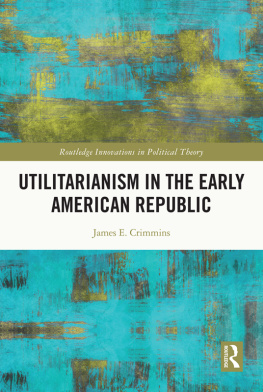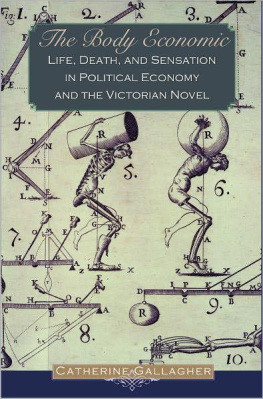Securing the Fruits of Labor
SECURING the
FRUITS of LABOR
The American Concept of Wealth Distribution, 17651900
JAMES L. HUSTON
With a New Preface by the Author
LOUISIANA STATE UNIVERSITY PRESS BATON ROUGE
Published with the assistance of the V. Ray Cardozier Fund
Published by Louisiana State University Press
Copyright 1998 by Louisiana State University Press
Foreword copyright 2015 by Louisiana State University Press
All rights reserved
Manufactured in the United States of America
Louisiana Paperback Edition, 2015
Designer: Michelle Myatt Quinn
Typeface: AGaramond
Typesetter: Wilsted & Taylor Publishing Services
Portions of Chapters 1, 2, and 3 first appeared in the article The American Revolutionaries, the Political Economy of Aristocracy, and the American Concept of the Distribution of Wealth, 17651900, American Historical Review, XCVIII (1993), 10791105, and are reprinted with permission. Portions of Chapter 5 and 7 were first published as part of the article Virtue Besieged: Virtue, Equality, and the General Welfare in the Tariff Debates of the 1820s, Journal of the Early Republic, XIV (1994), 52347, and are reprinted with permission. Portions of the March 6, 1860, speech of Abraham Lincoln are taken from The Collected Works of Abraham Lincoln, ed. Roy P. Basler, copyright 1953 by the Abraham Lincoln Association. Reprinted by permission of Rutgers University Press. Portions of J. Hector St. John de Crvecoeur, Letters from an American Farmer (1782; rpr. New York, 1912), are reprinted by permission of Everymans Library, David Campbell Publishers Ltd. Portions of John Locke, Two Treatises of Government, ed. Peter Laslett (Cambridge, Eng., 1988), are reprinted by permission of Cambridge University Press.
Library of Congress Cataloging-in-Publication Data
Huston, James L., 1947
Securing the fruits of labor : the American concept of wealth distribution, 17651900 / James L. Huston; with a new preface by the author. Louisiana paperback edition.
pages cm
Includes bibliographical references and index.
ISBN 978-0-8071-6045-9 (pbk. : alk. paper) ISBN 978-0-8071-6046-6 (pdf) ISBN 978-0-8071-6047-3 (epub) ISBN 978-0-8071-6048-0 (mobi) 1. Income distributionUnited StatesHistory. 2. Distributive justiceUnited StatesHistory. 3. WealthMoral and ethical aspectsUnited States History. I. Title.
HC110.15H87 2015
339.20973'09034dc23
2014039723
The paper in this book meets the guidelines for permanence and durability of the Committee on Production Guidelines for Book Longevity of the Council on Library Resources.

To my wife, Kathy Jane Simmons Huston
CONTENTS
TABLES
PREFACE TO THE 2015 EDITION
I n early June 2014 Rand Dotson, the executive editor of Louisiana State University Press, informed me of the decision of the Press to issue Securing the Fruits of Labor: The American Concept of Wealth Distribution, 17651900 in paperback. I was of course delighted. The book has been out of print now for several years, more than a decade, and I know there have been people who have desired their own copy. The book is informative about American ideals in the nineteenth century and the alteration of those ideals in the early twentieth. A relevance factor has probably played a role in its issuance in paperback form. Since the great recession of 2008, and most noticeably in public discourse starting about 2012 or 2013, the subject of the distribution of wealth and income has become a pressing issue, as the distribution in the United States has materially worsened since 1970 for the majority of people, and now many fret over the disappearance of the middle class. To these concerns, the thinking of Americans in the nineteenth century is an important referent to answer the query as to why the distribution of wealth and income is important, and to grasp some of the forces that may be doing the distorting.
Seventeen years have passed since the publication of Securing the Fruits of Labor, and in that time I have researched congressional debates about property rights in slavery, the battles of Stephen A. Douglas, and the evolution of British, southern, and northern agriculture. The number of newspapers, periodicals, pamphlets, books, and manuscripts that I have pored over has become substantial, and in all that mountain of information I continually found reference to the basic concepts that formed my core interpretation of how Americans understood the mechanisms of wealth distribution between 1765 and 1900. If anything, I underestimated aristocracy as the essential touchstone for American understanding of economics and politics; moreover, I failed to grasp fully the dominance of the British aristocracy. Altogether, I believe that the interpretive framework I offered in 1998 holds up quite well nearly two decades later.
Still, some subjects could be reinforced or shored up. Financial manipulations, especially by banks, could be given more space. Southern thinking on the distribution of wealth and income is not as strong in the book as it could be. Also, there was an awareness that great wealth could easily translate itself into an aristocracy. An area that deserves further investigation is nineteenth-century understanding of corporations. Americans in those days weighed life in individualistic terms; their understanding of an appropriate distribution of wealth and income derived from the activities that a sole individual could achieve. Their arguments against corporations were that somehow the joining of wealthy people together in one company generated an unfairness that took the form of inequality. This explanation is not at all a modern one; nineteenth-century orators and writers seemingly offered no analysis about the wealth-distorting power of corporations that Americans in the twenty-first century draw upon.
The present battle over wealth and income distribution has certain elements that invite a comparison with nineteenth-century arguments. The first has to do with market expansion. There should be no doubt that the contemporary worsening of the distribution of wealth and income is an unavoidable result of globalization, which is really a fancy term for market expansion. The nineteenth century saw the same market expansion, but historians now refer to it as the Transportation Revolution or the Market Revolution. Whenever a market suddenly has a geographical expansion, entrepreneurs immediately have the ability to sell their products to a new market, and hence their total profits may jump skywards; however, the wage-earner employed in making the product will not have the same jump. More people may be employed in making the product, but the wage rate will not climb by any significant amount. So in both instances entrepreneurial profits soar while wage rates stagnate or slowly climb, a perfect prescription for a worsening distribution of wealth.
As an aside, it is not today well noted that globalization has also upset standard American theories about government action to stimulate the economy. Both the Keynesian approach and the supply-side nostrum depend on a closed economy, an economy with distinct boundaries to its market. The supply-side idea holds that tax cuts to the rich lead to more investment, which creates more capital stock, which then calls for more workers at a higher wage. But any tax cut now, especially to large corporations, results in investment overseas, not investment in the United States. Tax cuts in the United States today may just as well be called Chinese Full-Employment Acts as anything else. The same is true for Keynesian economics. Any deficit spending or tax cuts for consumers might simply result in the purchase of more goods made overseas, and thus have a negligible impact on the American economy, American unemployment rates, and American workers. The only government activity that could possibly be restricted to U.S. workers and to the domestic economy would be infrastructure spending, and even then safeguards would have to be put into place.





